02 Feb Transparent fire resistance
This article is part of an exclusive series by Abhishek Chhabra, Business Development Manager, Thomas Bell-Wright International Consultants. Here he considers the compartmentation solutions that lets us ‘see’ through the passive fire protection focusing solely on understanding how fire resistance for glazing gets evaluated and a quick guide to compliance.
We have come a long way from the time when glass was only used as a ‘see though’ element. Now glazing can take on the functionality of compartmentation as well. As the utilisation of glazing increased, so did the building code requirements. Or what can be called as the expected performance from elements to instill fire protection in the elements of buildings.
As the risks of changing causes of fire have been investigated, new rules and requirements have come to be. Like in certain types of buildings (occupancy types) there exists a risk of external fires and need for compartmentation of the building’s exterior. If the buildings exterior consists of a curtain walling solution, then such a glazing is expected to deliver a fire resistance rating of a given duration (in hours). Hence the need for fire rated external glazing systems.
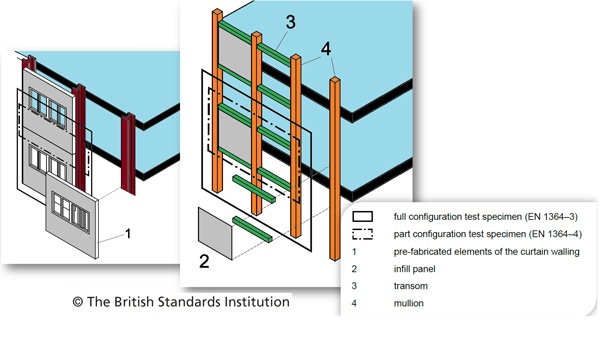 Internal compartmentation using partitions and fire rated doors too have been conquered as an application by glass. And hence glazing has inherited the performance expectation of compartmentation as well.
Internal compartmentation using partitions and fire rated doors too have been conquered as an application by glass. And hence glazing has inherited the performance expectation of compartmentation as well.
Compliance flow
Throughout the compliance series in this magazine, you would know about the basic building blocks of compliance. In this brief note we will not go deeper into these needs to ensure compliance:
A Repeatable performance of Materials & Systems delivered to site;
b Repeatable workmanship for installation and
C Repeatable state of the materials & Systems after Maintenance.
Before we delve into understanding different test methods used to evaluate fire resistance have a glance at image 1 and image 2 which are drawn from British and European test methods to better understand some of the key elements of glazing solutions and how they can be tested and grouped.
European Approach
The European approach of testing takes on several permutations of possible combinations on the testing side. As you may have noticed in images 1 and 2, the spread of possible combinations which are defined are quite a few. As the conformity regimes in different member states vary along with the severity level of compliance, a lot of effort has been spent in defining variations clearly. In order to explain the relationship between EN 1363-1, EN 1363-2, EN 1364-3 and EN 1364-4, I have used images 3 to 6.
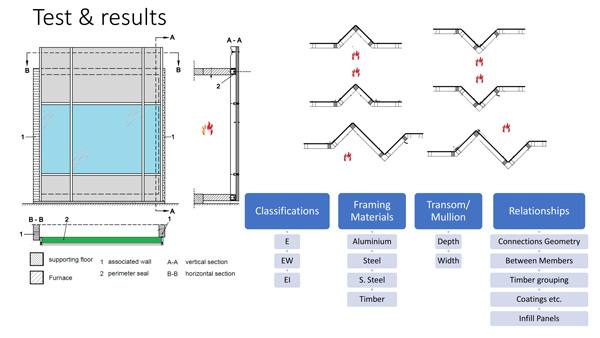
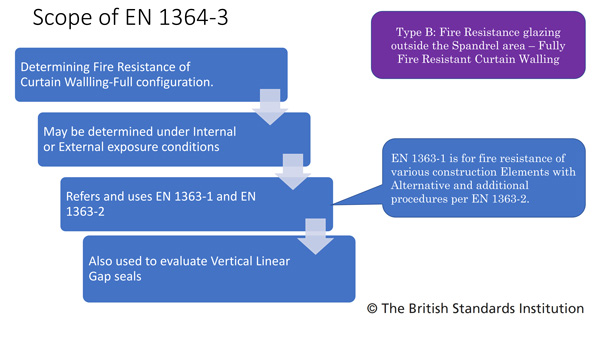
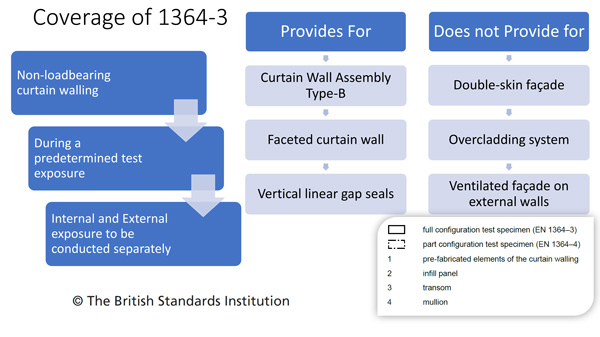
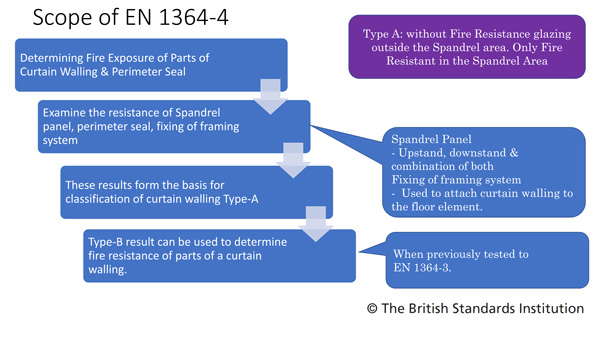
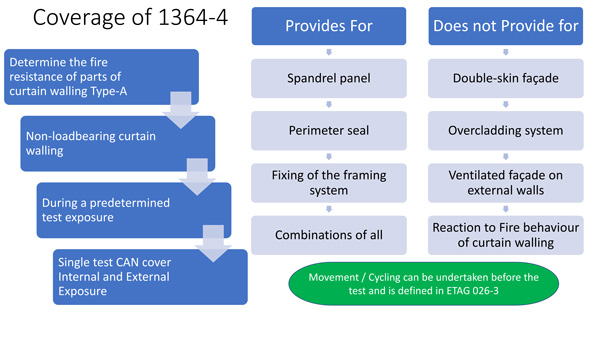
Type 4 or higher type of certification and listing regimes explained in earlier articles in this magazine (As per ISO 17067) are not used everywhere in Europe. Hence it is important that as users of test evidence to European test Methods attention must be paid to compliances methodologies.
American Approach
The American approach uses standard test methods and passes on the evaluation and usage to certification & listing bodies along with code evaluation bodes and authorities having jurisdiction. Some of these even get defined in Construction Specifications Institute (CSI)’s Master Format, where the number 08 80 00 defines Glazing.
- UL9 – Standard for Fire Tests of Window Assemblies
- NFPA 251: Standard Methods of Tests of Fire Resistance of Building Construction and Materials
- ANSI/UL 263, the Standard for Safety of Fire Tests of Building Construction Materials
- NFPA 257: Standard on Fire Test for Window and Glass Block Assemblies
Other countries
Several other regions which evolve as jurisdictions; continue to evolve the test methods. Like the standards in South Africa (SANS 10177 – 2: Fire Resistance) or in India where recently two standards were published:
- IS 16947: Fire Resistance Tests for Doors with Glass Panes, Openable Glass Windows and Sliding Glass Doors
- IS 16945: Fire Resistance Test for Glass Walls
Conclusion on Compliance
While the test methods to evaluate the fire resistance may have variations in approach, the intent is always the same: to assess the ability of the Element or Solution to withstand or contain the fire. The real key for the users and specifiers is in understanding the pitfalls in assurance. The proof of compliance should be a certification and listing document which provides traceability from the manufacturing location to the construction site. But as a user or a specifier, one must check the listing document for all the details as well as understand how the test samples would have been installed in the test laboratories. Unless there exists a robust mechanism to verify the installations at the sites where products and solutions are being installed, all the money spent on compliance is a waste.






